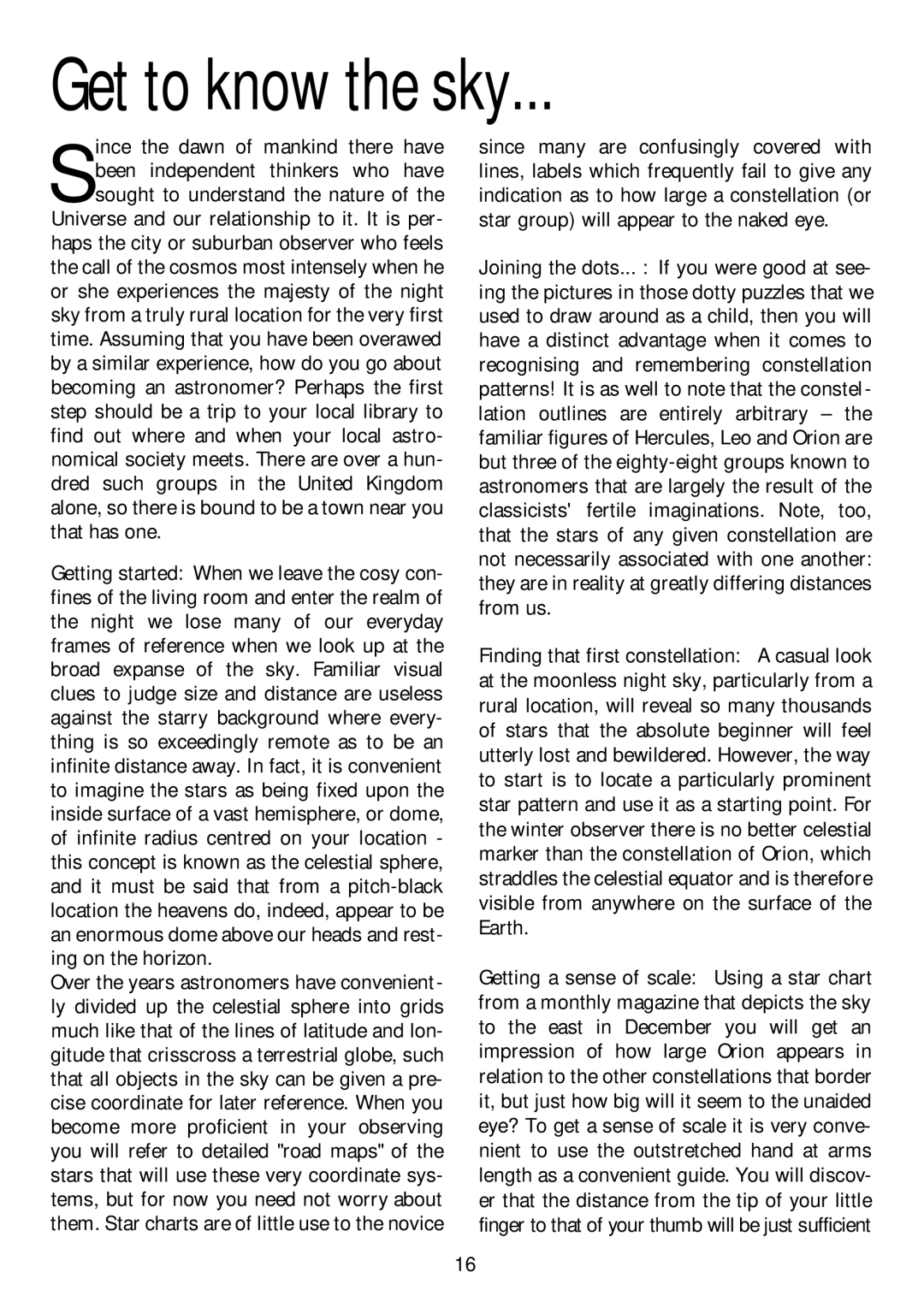Get to know the sky...
ince the dawn of mankind there have Sbeen independent thinkers who have sought to understand the nature of the Universe and our relationship to it. It is per- haps the city or suburban observer who feels the call of the cosmos most intensely when he or she experiences the majesty of the night sky from a truly rural location for the very first time. Assuming that you have been overawed by a similar experience, how do you go about becoming an astronomer? Perhaps the first step should be a trip to your local library to find out where and when your local astro- nomical society meets. There are over a hun- dred such groups in the United Kingdom alone, so there is bound to be a town near you
that has one.
Getting started: When we leave the cosy con- fines of the living room and enter the realm of the night we lose many of our everyday frames of reference when we look up at the broad expanse of the sky. Familiar visual clues to judge size and distance are useless against the starry background where every- thing is so exceedingly remote as to be an infinite distance away. In fact, it is convenient to imagine the stars as being fixed upon the inside surface of a vast hemisphere, or dome, of infinite radius centred on your location - this concept is known as the celestial sphere, and it must be said that from a
Over the years astronomers have convenient- ly divided up the celestial sphere into grids much like that of the lines of latitude and lon- gitude that crisscross a terrestrial globe, such that all objects in the sky can be given a pre- cise coordinate for later reference. When you become more proficient in your observing you will refer to detailed "road maps" of the stars that will use these very coordinate sys- tems, but for now you need not worry about them. Star charts are of little use to the novice
since many are confusingly covered with lines, labels which frequently fail to give any indication as to how large a constellation (or star group) will appear to the naked eye.
Joining the dots... : If you were good at see- ing the pictures in those dotty puzzles that we used to draw around as a child, then you will have a distinct advantage when it comes to recognising and remembering constellation patterns! It is as well to note that the constel- lation outlines are entirely arbitrary – the familiar figures of Hercules, Leo and Orion are but three of the
Finding that first constellation: A casual look at the moonless night sky, particularly from a rural location, will reveal so many thousands of stars that the absolute beginner will feel utterly lost and bewildered. However, the way to start is to locate a particularly prominent star pattern and use it as a starting point. For the winter observer there is no better celestial marker than the constellation of Orion, which straddles the celestial equator and is therefore visible from anywhere on the surface of the Earth.
Getting a sense of scale: Using a star chart from a monthly magazine that depicts the sky to the east in December you will get an impression of how large Orion appears in relation to the other constellations that border it, but just how big will it seem to the unaided eye? To get a sense of scale it is very conve- nient to use the outstretched hand at arms length as a convenient guide. You will discov- er that the distance from the tip of your little finger to that of your thumb will be just sufficient
16
